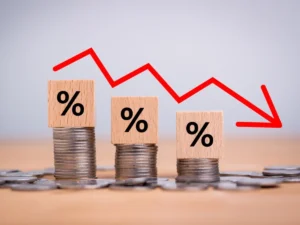U.S. inflation shows signs of cooling
Inflation in the U.S. has shown signs of decreasing in recent months, which could indicate a significant change in the Federal Reserve’s policies. This development is crucial, as inflation had reached concerning levels that affected consumers and the economy as a whole.
The Federal Reserve, which has been raising interest rates to combat inflation, now faces pressure to reevaluate its approach. With the decrease in inflation, analysts suggest that it may be time to consider a pause in rate increases, which could positively impact the economy.
Consumers have begun to experience greater stability in the prices of food and essential goods. This is a relief for many families who had been dealing with the constant rise in prices over the past few years. Price stability is a key indicator of economic health and can influence consumer spending.
Recent data shows that year-over-year inflation has dropped, leading to a revision of economic projections. Experts have noted that, although inflation remains above desired levels, the downward trend is an encouraging sign. This shift in the direction of inflation could allow the Federal Reserve to adopt a more flexible approach to its monetary policy.
The decline in inflation has also been reflected in other sectors, such as housing and energy. Gasoline prices have shown a downward trend, contributing to reducing inflationary pressure. Additionally, the housing market has begun to stabilize, which could indicate that the economy is finding a balance.
However, analysts warn that there is still a long way to go. Despite the decrease in inflation, prices remain high relative to historical levels. Therefore, it is essential for consumers and businesses to stay alert to potential fluctuations in the future.
The Federal Reserve has expressed its commitment to monitoring the situation and adjusting its policies as necessary. The Fed Chair, Jerome Powell, has indicated that the fight against inflation is not over and that any change in interest rates will depend on future economic data.
Consumers are beginning to feel the impact of this stabilization in prices. Many report that they can now purchase essential goods without worrying as much about rising prices. This improvement in inflation perception could lead to an increase in consumption, which, in turn, could drive economic growth.
Businesses are also reacting to the new market reality. With lower inflation, some companies are reassessing their pricing strategies. This could lead to greater competition in the market, benefiting consumers in terms of prices and options.
Despite the improvement in inflation, some sectors still face challenges. For example, the supply chain continues to experience disruptions that may affect the prices of certain products. These disruptions serve as a reminder that the economy is a complex system and that changes in one area can have ripple effects in others.
The future of inflation in the U.S. remains uncertain. While there are signs of improvement, economists warn that it is important not to let guard down. The Federal Reserve will need to continue monitoring the situation closely and be prepared to act if conditions change.
The decrease in inflation in the U.S. is a positive development that could signal a change in the Federal Reserve’s policies. Consumers are experiencing more stable prices, which can have a significant impact on spending and economic confidence. As the country moves forward, it will be crucial to observe how monetary policies evolve and how they affect the overall economy.











Post Comment